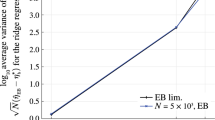Abstract
The recently proposed function controlled variable step-size least-mean-square (FCVSSLMS) algorithm has shown high performance in different noise environments. The performance of the algorithm can be improved further if the system is sparse. In this paper, we propose a new algorithm based on the FCVSSLMS algorithm. The proposed algorithm imposes an approximate penalty in the cost function of the FCVSSLMS algorithm. We also present the convergence analysis of the proposed algorithm and derive the stability criterion. The performance of the proposed algorithm is compared to those of the variable step-size least-mean-square, more robust variable step-size least-mean-square, FCVSSLMS algorithm and reweighted zero-attracting least-mean-square algorithm in a system identification setting with an additive white Gaussian noise and additive correlated Gaussian noise. The proposed algorithm has shown high performance compared to the others in terms of the convergence rate and mean square deviation.





Similar content being viewed by others
References
Y. Chen, Y. Gu, A.O. Hero, Sparse LMS for system identification, in IEEE International Conference Acoustics, Speech and Signal Processing, (2009), pp. 3125–3128
Y.S. Choi, H.C. Shin, W.J. Song, Robust regularization for normalized LMS algorithms. IEEE Trans. Circuits Syst. II 53, 627–631 (2006)
D.L. Duttweiler, Proportionate normalized least-mean-square adaptation in echo cancelers. IEEE Trans Speech Audio Proc. 8(5), 508–518 (2000)
S. Haykin, Adaptive Filter Theory (Prentice Hall, Englewood Cliffs, NJ, 2002)
J.K. Hwang, Y.P. Li, Variable step-size LMS algorithm with a gradient-based weighted average. IEEE Signal Proc. Lett. 16(12), 1043–1046 (2009)
T.M. Jamel, K.K. Al-Magazachi, Simple variable step size LMS algorithm for adaptive identification of IIR filtering system, in IEEE International Conference on Communications, Computers and Applications, (2012), pp. 23–28
J.F. Kenney, E.S. Keeping, Kurtosis, in Mathematics of Statistics (Princeton, NJ, 1962)
R.H. Kwong, A variable step-size LMS algorithm. IEEE Trans. Signal Proc. 40(7), 1633–1641 (1992)
M. Li, L. Li, H.-M. Tai, Variable step size LMS algorithm based on function control. Circuits Syst. Signal Proc. 32(6), 3121–3130 (2013)
Y. Liu, R. Ranganathan, M.T. Hunter, W.B. Mikhael, Complex adaptive LMS algorithm employing the conjugate gradient principle for channel estimation and equalization. Circuits Syst. Signal Proc. 31, 1067–1087 (2012)
H. Rey, L.R. Vega, A Rapid Introduction to Adaptive Filtering (Springer, New York, 2013)
M.S. Salman, M.N.S. Jahromi, A. Hocanin, O. Kukrer, A zero-attracting variable step-size LMS algorithm for sparse system identification, in IEEE International Symposium on Telecommunications, (2012), pp. 1–4
W.F. Schreiber, Advanced television systems for terrestrial broadcasting: some problems and some proposed solutions. Proc. IEEE 83, 958–981 (1995)
C.A. Sing-Long, C.A. Tejos, P. Irarrazaval, Evaluation of continuous approximation functions for the \(l_{0}\)-norm for compressed sensing. Proc. Int. Soc. Mag. Reson. Med. 17, 4585 (2009)
X. Wu, L. Gao, Z. Tan, An improved variable step size LMS algorithm, in IEEE International Conference on Measurement, Information and Control (ICMIC), vol 1 (2013), pp. 533–536
S. Zhao, D.L. Jones, S. Khoo, Z. Man, New variable step-sizes minimizing mean-square deviation for the LMS-type algorithms. Circuits Syst. Signal Proc. 33, 2251–2265 (2014)
S. Zhao, Z. Man, S. Khoo, R.H. Wu, Variable step-size LMS algorithm with a quotient form. Signal Proc. 89(1), 67–76 (2009)
Author information
Authors and Affiliations
Corresponding author
Rights and permissions
About this article
Cite this article
Turan, C., Salman, M.S. Zero-Attracting Function Controlled VSSLMS Algorithm with Analysis. Circuits Syst Signal Process 34, 3071–3080 (2015). https://doi.org/10.1007/s00034-015-9996-5
Received:
Revised:
Accepted:
Published:
Issue Date:
DOI: https://doi.org/10.1007/s00034-015-9996-5




